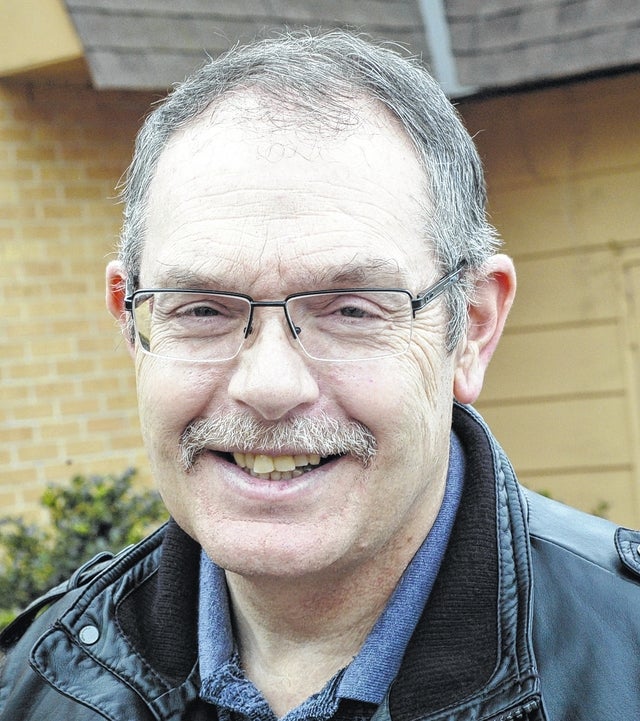Three leaf terrorist: Poison ivy
Published 8:54 pm Friday, July 21, 2017
Poison ivy, according to the American Medical Association, causes more cases of contact dermatitis than all other plants, household and industrial chemicals combined. Contact dermatitis is a fancy name for redness, rash, blisters and itching. This plant affects thousands of Americans each year.
We had a wet spring and a wet summer so far this year, and this encouraged poison ivy seeds to germinate. It prefers moist, deciduous forests and wooded areas but can also be found in pastures, fence lines and in your backyard. What does this plant look like? Poison ivy has a compound leaf with three bright green, shiny, egg shaped leaflets. Leaves are smooth above and some leaves may be toothed or lobed. I’ve never looked on the underside of a leaf, but they say that the leaf veins have hairs. The leaves are arranged alternately on the stem.
The old saying “leaflets three, let it be” should always be followed. Poison ivy can grow into a small shrub or if it’s close to a tree, grow as a vine and climb. The poison ivy in the open is often browsed by deer and doesn’t get any higher than knee high. The vines growing up a tree can get as big around as your arm with many tendrils sticking out. Beware, never touch those vines. Locals call those vines “Thunder Wood.” Campers, to their detriment have touched or burned fire wood with these vines attached.
Every part of a poison ivy plant contains a toxic, or sensitizing, oily compound called urushiol. This compound is in special resin ducts of the plant and when the plant is crushed bent, bruised, or bitten by insects, urushiol is released. Equipment, clothes and pet fur can all carry the compound and touched by humans will cause the rash.
You rarely see the poison ivy flowers. Each small flower is arranged on slender stems. They have five yellowish green petals. The fruit is grayish white and nearly round and contains a single seed about 3/16 in diameter. One of the reasons you don’t see the flowers or seeds is the deer browsing and that birds love the seeds. Where ever birds find a perch, you’ll find poison ivy, especially at the base of trees or in your flower beds below feeders.
Box elder leaves in the twig stage, look similar to poison ivy but the leaves are arranged opposite each other on the stem. Virginia creeper can also be confused with poison ivy but they have five leaflets instead of three. Note, where you find Virginia creeper and English ivy you may also find poison ivy.
In poison ivy country, the best way of not getting a rash is avoidance. Never touch or walk through it. Don’t touch your hand to your pant legs and then touch exposed skin. I try never to touch my face when working or hiking in the woods. Wear gloves and wash exposed skin thoroughly with soap and water after being where poison ivy is growing.
First aid for poison ivy consists of thoroughly washing with soap and water the affected areas. Wash all clothes with detergent. There are products available from drugstores as wipes that may remove the oil and reduce the allergic reaction. Also available over the counter are Benadryl topical creams or oils, hydrocortisone creams and other anti-itch compounds that may reduce the itch.
There are several herbicides labeled for poison ivy but the most effective are those containing glyphosate, the active ingredient in Roundup. Clipping the vines on trees and painting the stumps with pure 41 percent glyphosate works well. Remember the roots will then send up shoots and you’ll have to content with them.
Cultural control would be just clipping the stems repeatedly until the root reserves are exhausted. This requires diligence.
No matter what method you use, persistence is required to eradicate poison ivy. Do not burn any of the plant material because the smoke can carry the oil.
What is going on in Extension?
Market on Main: Every Saturday at the LaGrange Theater parking lot from 8 to 10 a.m. The freshest produce in Troup County.
August 1: Lunch-N-Learn Fall Vegetable Gardening; LaGrange Library at noon.
August 10: MGEV Meeting; 7 PM at the Ag Center
August 15: Troup County Cattleman; 7 p.m. at the Ag Center; Levi Russel: Making money in the cattle business. Call ahead for reservations: 706.882.5561 $6/person
Grassmasters Program: If you are raising forages for sheep, goats, horses or cattle and want to improve your pastures and hay this class may be for you. Begins August 31 and ends October 26. This class will meet on Thursday evenings from 6:30 to 8:30 p.m. for seven evenings. The cost is $25 per family. Call UGA Extension-Harris County to register. 706.628.4824; This program is sponsored by Troup, Meriwether and Harris County Extension.
If you have any questions or concerns, stop by or call the office.
Brian Maddy is the ANR Agent for Troup County Extension. The Troup County Extension office is located at 114 Church Street, LaGrange, GA. 30240 (706) 883-1675. Monday – Friday 8 a.m. to noon and from 1 p.m. to 5 p.m. Email: bmaddy@uga.edu


